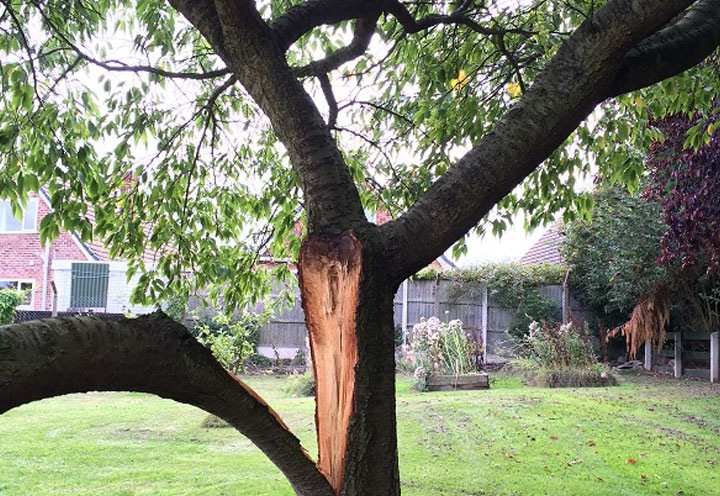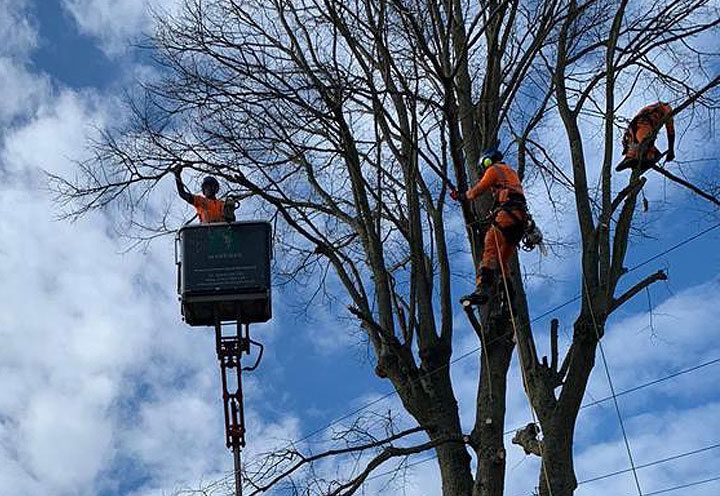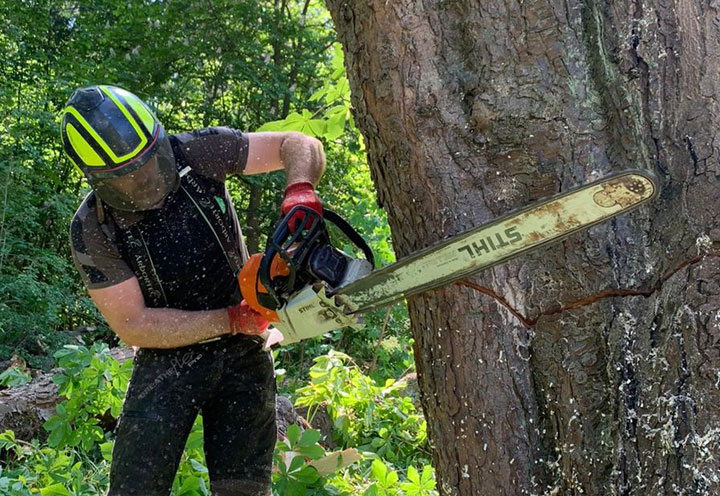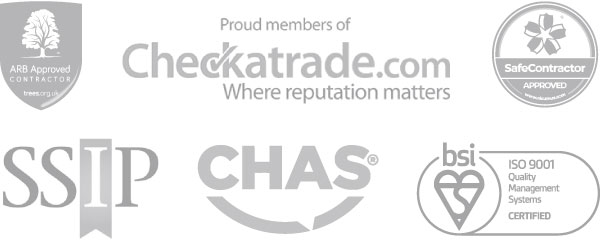Miscellaneous
Decay & Cavities
Trees with cavities are not uncommon, some tree species develop them more readily than others. Most originate as part of a natural process, although some are inflicted upon a tree by man induced injuries.
In order to evaluate the extent of a cavity, an initial visual tree survey is required, this will determine if the tree needs a more detailed inspection from these results you can decide upon the most appropriate course of action to address the cavity.

Treatment of Decay
The development of decay is favoured by both the availability of aeration and a large food base. Historically partially occluded cavities were filled. This is now recognised to be poor practice mainly due to the abrasion caused by the solid column of filler injuring the barrier zones within the tree. Therefore it is no longer carried out.
However the removal of soft, decayed wood and organic matter from the surface of a cavity or other decaying region of a tree, may help to reduce the supply of food to pathogens. This reduces its ability to spread beyond the trees barrier zones.
Cavities containing water are strongly recommended to be left alone as they are a deterrent to pathogens because the oxygen supply is not sufficient (for those trees that are vulnerable to arsine i.e. small people carrying a box a matches, some form of a deterrent should be erected).
If two or more cavities interconnect (coalesce) then there may be a need for further inspection, this may have a bearing on the structural stability of the tree, or indicate internal colonisation by pathogens.
Weak Structures

Preventive measures could have been implemented when the tree was a juvenile, failure to adopt pruning techniques such as formative pruning comes with consequences.
Cable Bracing & Rod Bracing
Rod bracing is mainly used to resist tensile and more seldom compressive stress in the immediate region of a zone of weakness or defect, for example co-dominant stems and cavities. Cable bracing provides support to weak limbs. Both techniques are commonly used in conjunction with one another.
Non-invasive bracing systems incorporating belt attachments and shock absorbers can be prescribed as opposed to cable bracing.
Propping
Large branches that are excessively long and heavy, which are within a few meters from ground level are worthy candidates for propping. Propping can be used to support an entire tree with an undesirable lean, although this will be limited to relatively small tree species.
Guying
Trees that have developed a weak root plate system and pose an unacceptable risk, need to be addressed in an appropriate manner. Large trees that have been transplanted may also warrant Guying to help with stabilisation until the root plate is sufficient to support itself.
Epicormic & Basal Growth Removal

Basal Growth Removal Before

Basal Growth Removal After
Trees have dormant buds tucked under their bark. Sometimes, stress triggers these buds to wake up and sprout new branches. This is called epicormic growth if it happens on the main stem, and basal growth if it sprouts from the base of the tree.
Stressors like harsh weather, heavy pruning, or changes in the soil can all cause this. It’s particularly common in certain tree species like linden (lime), oak, willow, and poplar.

While this regrowth might be a natural response, it can be unsightly in gardens and urban areas. Luckily, you can keep things tidy by regularly pruning these shoots to maintain a clear stem and surrounding area.
Ivy Severance
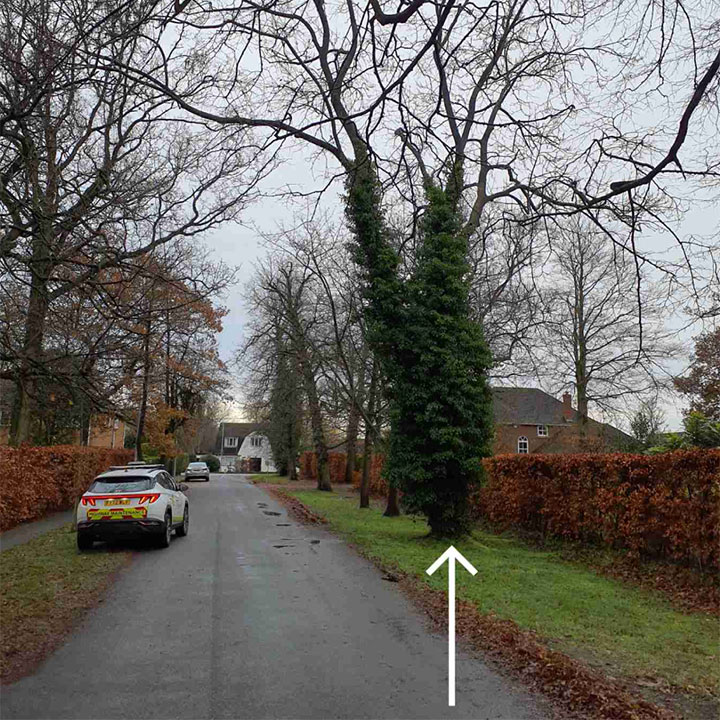
Ivy Severance Before
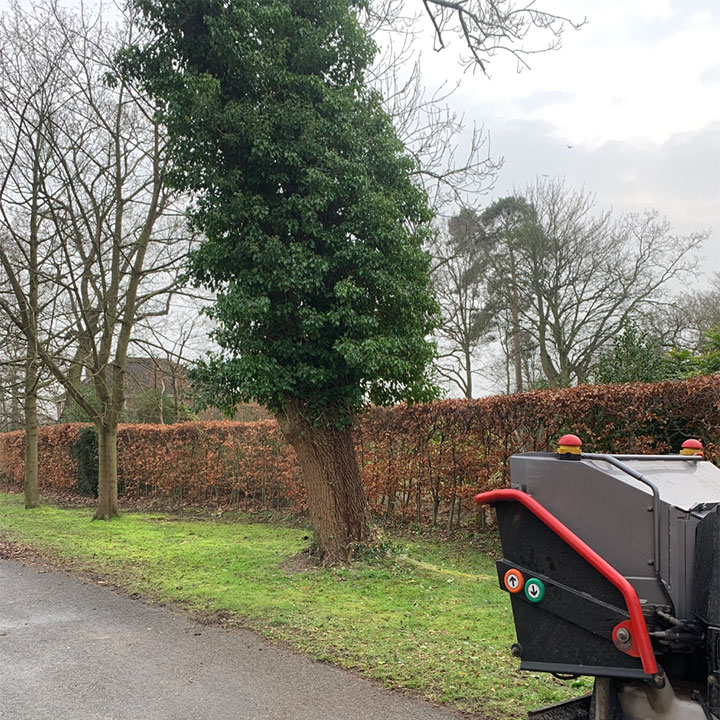
Ivy Severance After
Ivy is often accused of strangling trees on which it grows. The reality is often less sinister and ivy provides shelter for many forms of wildlife but there may be times when its control is advisable. In the border, ivy’s dense growth can swamp other plants and control here is often needed.
You should consider ivy control if the branch canopy becomes thin and allows sufficient light to enter, the ivy will develop into its arboreal form. Fraxinus (ash) and Larix (larch), are both trees with a naturally thin, open crown so may suffer heavy infestation. For this reason ivy on ash and larch trees is often controlled.
Where ivy may be a problem is with very old or damaged trees. Firstly, its dense evergreen cover may hide cavities or areas of decay. Secondly, it can become an additional weight in the canopy which, in time, could affect stability of the tree, particularly in windy conditions.
When trees are grown for their attractive stem or bark, such as birch and some acers, it is sensible to keep the stems or trunks free from ivy so as not to obscure this key ornamental feature

